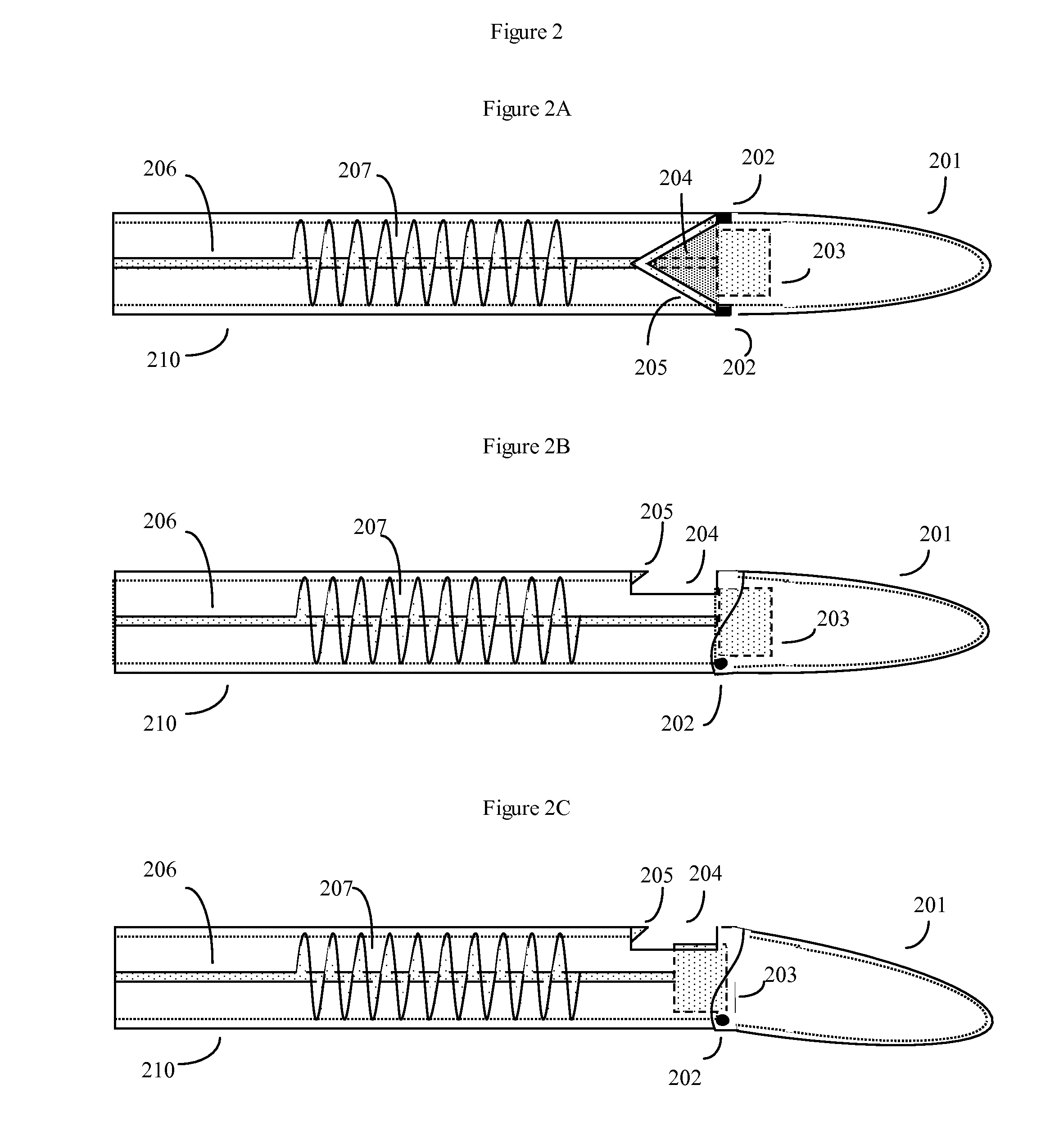High capacity debulking catheter with razor edge cutting window
a high-capacity, cutting-window technology, applied in the field of high-capacity debulking catheters with razor-edge cutting-windows, can solve the problems of amputation loss, increased surgical costs, and increased surgical costs, and achieves faster and more precise procedures. , the effect of reducing the burden on patients and physicians
- Summary
- Abstract
- Description
- Claims
- Application Information
AI Technical Summary
Benefits of technology
Problems solved by technology
Method used
Image
Examples
Embodiment Construction
[0033] The present art is normally intended for use with human patients, as well as various veterinary applications. For simplicity, this combined human or animal use will be referred to as use in mammals, although of course such devices could also be used in appropriate non-mammal animals such as birds, reptiles, and amphibians, etc., as appropriate.
[0034] It should also be understood that although the examples of cutting unwanted plaque deposits in arteries are used throughout this disclosure, the actual invention may be used for a broader variety of applications, including removing tumors, getting biopsies, etc. in arteries, veins, and any other tubular or roughly tubular body lumen.
[0035] Nomenclature: The handle end of the catheter is the proximal location, and the nose cone tip of the catheter is the distal location.
[0036] An overview of the device is shown in FIG. 1. The device consists of a handle (101), one or more control knobs, tabs, or switches (102), a long catheter ...
PUM
 Login to View More
Login to View More Abstract
Description
Claims
Application Information
 Login to View More
Login to View More - R&D
- Intellectual Property
- Life Sciences
- Materials
- Tech Scout
- Unparalleled Data Quality
- Higher Quality Content
- 60% Fewer Hallucinations
Browse by: Latest US Patents, China's latest patents, Technical Efficacy Thesaurus, Application Domain, Technology Topic, Popular Technical Reports.
© 2025 PatSnap. All rights reserved.Legal|Privacy policy|Modern Slavery Act Transparency Statement|Sitemap|About US| Contact US: help@patsnap.com



